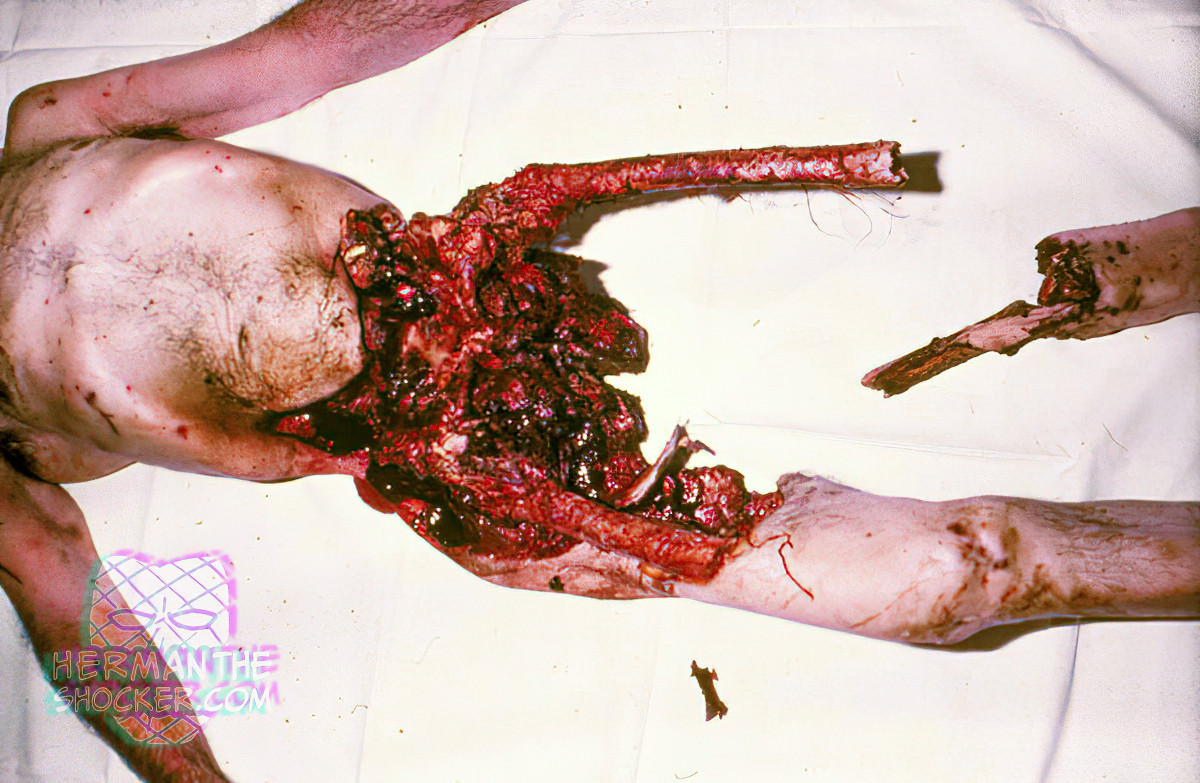Extensive traces of scavenging next to the body after it had been enclosed at home for an extended period of time. No further info. Defects caused by animal scavenging show no underlying hemorrhage. The shape of defect margins may provide information about the kind of animal, e.g., rodent. In some cases, damage or defects caused by animal scavenging may initially arouse suspicion of homicide. Dogs can cause striated, reddish-brown, dried-out skin detachment as well as deep soft tissue defects.
Animal scavenging generally begins at unclothed and freely accessible points on the body (head, neck, and hands). Small vertebrates, in particular rodents like mice and rats, start scavenging at easily accessible areas such as the nose, ears, lips, and fingertips. Rats tend to have a predilection for eyes, while fish scavenging defects are generally seen on bodies recovered from water. Typical evidence of gnawing and bites includes wounds with gently curved margins, occasionally also parallel wound margins. Lacerations and scratches are usually caused by canines, incisors, or claws. In the case of advanced animal scavenging, body parts may be carried away, for example by foxes or wild boar. Birds tend to cause hole-like or small stab-like defects with the tips of their beaks.
Latest posts








